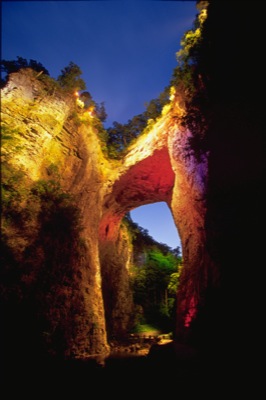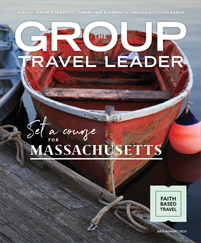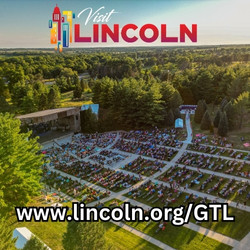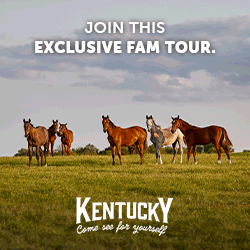
From the Blue Ridge Parkway to the Cumberland Gap and all of the mountains and valleys in between, Virginia is alive with color.
Traveling from the Atlantic Coast into the more rural areas of central and western Virginia, you’ll find an array of sights that are among the most striking and colorful in the United States.
“The scenery is phenomenal,” said Catherine Fox, tourism director of the Roanoke Valley Convention and Visitors Bureau. “From April, when the redbuds and dogwoods start to come in bloom, all the way through the second week of November, we see color throughout the valley. So much of the natural area explodes into these beautiful reds, yellows and golds.”
For groups, the beauty of the area provides numerous opportunities to get outdoors and enjoy some natural attractions. Whether you take a scenic drive along the parkway or a float trip on a local lake or river, these tour experiences are a natural choice.
Roanoke Valley
Natural beauty is a principal part of the attraction in Roanoke and the surrounding Roanoke Valley. Many visitors visit the area as part of a trip on the famed Blue Ridge Parkway.
“The Blue Ridge Parkway is one of the most visited national parks in the country,” Fox said. “We see ourselves as an anchor along the parkway. The natural beauty is key to our area, and that, embraced with the amenities in this community, offers a setting that is group friendly.”
Groups can pick up a step-on guide in the city who will accompany them through some of the most scenic sections of the Blue Ridge Parkway. Along the way, they will encounter sites such as Chateau Morisette Winery and Mabry Mill, which is one of the most photographed sites on the highway.
“The mill has something to look at in any season,” Fox said. “They offer some interpretive exhibits, and a small store and restaurant offers buckwheat and sweet potato pancakes.”
Another popular scenic site in the area is Natural Bridge, a massive 20-story-tall rock formation that is said to have been visited by George Washington and that was once owned by Thomas Jefferson. Groups can take a walk over the bridge during the day and return in the evening for a laser-light show on the bridge that is timed with the sunset.
About an hour’s drive south of Roanoke, Smith Mountain Lake has 500 miles of shoreline. Groups can catch the most impressive scenery aboard the Virginia Dare, a paddle wheeler that offers lunch and dinner sightseeing cruises.
Shenandoah Caverns
Although you might not consider it “outdoors,” Shenandoah Caverns is a natural attraction. Discovered around 1856, the caverns have been open to the public since 1922 and have become one of the most popular stops in central Virginia’s Shenandoah Valley.
“We have 17 rooms in the caverns,” said marketing director Allison Dugan. “It’s a constant temperature of about 56 degrees. Some of our bacon formations have been featured in National Geographic.”
Visitors to the caverns will see this cave bacon and many other unusual crystalline and rock formations caused by mineral waters dripping into the cave. One formation, known as the Capital Dome, is a large rock that bears a striking resemblance to the U.S. Capitol in Washington.
And the often-photographed Diamond Cascade, a huge crystalline formation that resembles a waterfall, is used as the backdrop for many weddings.
Shenandoah Caverns is the only cave in Virginia that has an elevator from the surface to the cave floor, making it easily accessible for tour groups. About 80 percent of the pathways throughout the cavern are paved, level walkways.
In addition to seeing the sights underground, groups visiting Shenandoah Caverns can have a root beer float in the 1950s soda fountain at the surface or see a number of museum-style exhibits on parade floats and department store window displays.
Cumberland Gap
In the southwest tip of Virginia, near its border with Kentucky and Tennessee, the Cumberland Gap in the Appalachian Mountains was instrumental in the exploration and settlement of North America.
“Our greatest natural wonder is the low place in the mountains,” said Pam Eddy, interpretive ranger at Cumberland Gap National Historic Park. “It’s an important story to us in America, because everything that happened with people’s migrating patterns happened because of a certain natural feature.”
The gap gave buffalo herds a pass through the mountains, and they were followed by Native Americans and, later, American pioneers such as Daniel Boone, who would go on to explore Kentucky and other points west. Today, the park has more than 80 miles of hiking trails, some in isolated natural areas and others tracing the routes traveled by the people who migrated through the area.
Nature enthusiasts will find plenty to see on the hiking trails or at several scenic overlooks in the park, including a meteor crater on the other side of the mountain in Kentucky. Seasonal programs and activities capitalize on the colors of spring and fall.
“We have beautiful wildflower opportunities in the spring, when Mother Nature spreads her colorful apron upon the earth,” Eddy said. “We have wildflower walks starting in April, and sometimes there are photography workshops involved with that.”
www.nps.gov/cuga
Lynchburg
The Blue Ridge Parkway is a popular attraction for visitors to Lynchburg as well. Last year, in commemoration of the parkway’s 75th anniversary, the Lynchburg Regional Convention and Visitors Bureau created a tour itinerary called “75 Miles of Celebration” that takes groups to about a half-dozen stops along the parkway, including Thomas Jefferson’s Poplar Forest and the Peaks of Otter.
“The Peaks of Otter are two very recognizable peaks of the Blue Ridge Mountains,” said CVB director Beckie Nix. “They have hiking trails that take you up to the summit of the peaks. The park service provides a lot of programs up there, including astronomy programs at night when you can see a full moon or meteor showers.”
Within the city limits, Lynchburg offers more than 80 miles of hiking and biking trails, including the paved Blackwater Creek Trail that takes walkers across the James River Bridge to Percival’s Island. There are also numerous soft-adventure options for exploring the James River.
“The river offers some great opportunities, like canoeing, kayaking, tubing and fishing,” Nix said. “You can actually canoe or kayak through the heart of downtown. We have a couple of float companies that will take you out and pick you up at a designated spot.”
Outdoor adventurers might also enjoy a visit to the Liberty Mountain Snowflex Centre, a year-round artificial snow sports slope at Liberty University. The only facility of its kind in North America, Snowflex allows guests to ski, snowboard and snow tube on a special synthetic surface in winter and summer alike.
More on Virginia:
America’s cradle
Time-tested menus
Natural elegance
A family of note












